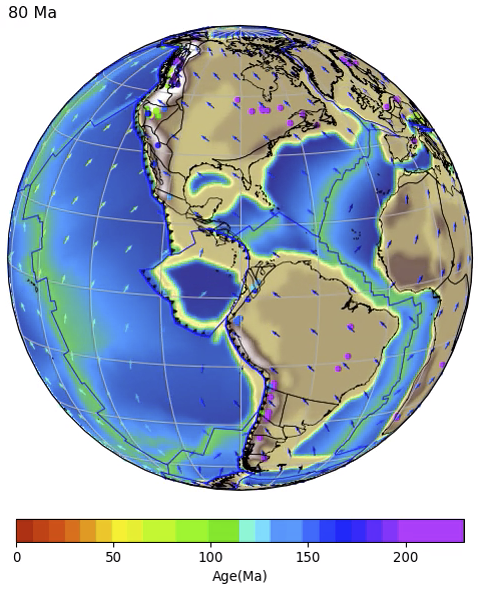Porphyry copper (Cu) systems occur along magmatic belts derived in subduction zones. Our current under- standing of their formation is restricted to observations from the overriding plate, resulting in a knowledge gap in terms of processes occurring in convergence zones through time. An association between key tectonic processes and the timing and location of porphyry Cu systems requires linking geological observations to plate tectonic subduction models. We connect the evolution of subduction zones and downgoing slab properties with the history of porphyry ore deposition across the Americas by using a spatio-temporal machine learning approach. We use these spatio-temporal properties to apply a wide range of prominent machine learning methods and show the results in terms of accuracy of predictions on the test dataset. We then provide spatial visualisations in deep- time showing highly prospective areas for porphyry Cu mineralisation along areas not related with known mineral occurrences along the subduction margins of North and South America. We show that a high orthogonal plate convergence speed is the most important feature related to the formation of porphyry Cu systems. This parameter is linked with the thickening of continental arcs which has been shown to enhance Cu transport within plutons. Convergence speed also controls the volume of plate material subducted into the upper mantle, including carbonate phases in the upper volcanic portion of the ocean crust and water-rich pelagic deep sea sediments, which have been demonstrated to enhance sulphur and metal transport, respectively, boosting metasomatic enrichment of the mantle wedge in volatiles, sulphur, and fluid-mobile large ion lithophile elements (LILE), and promoting the formation of porphyry Cu systems in the overriding plate. We incorporate plate tectonic subduction models with machine learning models for the generation of copper mineralization prediction maps. We demonstrate the potential of this application in global mineral exploration along Cordilleran sub- duction zones and provide open source code and data with our results.
Diaz-Rodriguez, J., Müller, R.D. and Chandra, R., 2021, Predicting the emplacement of Cordilleran porphyry copper systems using a spatio-temporal machine learning model, Ore Geology Reviews, published online 13 June 2021, https://doi.org/10.1016/j.oregeorev.2021.104300.
https://authors.elsevier.com/c/1dHMNcTGy8cG3
![]()

